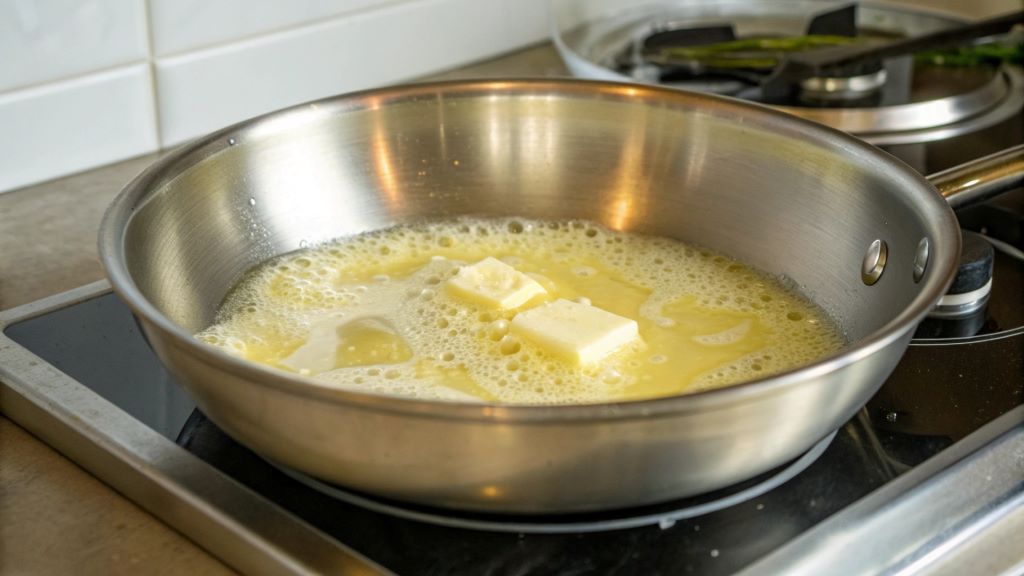With so many countertop materials available, picking the right one can be overwhelming. Granite and quartz have dominated the market for their durability, but natural stones like marble are always enticing for their elegance. Dolomite is gaining interest as it offers some of the best of both worlds – beauty and relative toughness. Let’s dive into everything you need to know about dolomite countertops.
Understanding Dolomite
Dolomite is a natural stone related to marble but formed under slightly different conditions. This results in a material that is often a little bit harder and less porous than marble. While still considered a “soft stone” compared to heavyweights like granite and quartzite, dolomite can be a good choice for those who desire the look and feel of natural stone in their kitchen..

The Pros: Why Dolomite Might Be for You
- Aesthetics: Dolomite shines here! It frequently offers stunning veining and patterns like marble, ranging from subtle grays to contrasting whites. It adds a touch of luxury that elevates any kitchen space.
- Hardness: Dolomite is moderately hard. While not as scratch-resistant as granite, it’s tougher than marble, making it suitable for everyday kitchen use with a little extra care.
- Heat resistance: While not entirely heatproof, dolomite can handle moderate heat better than some other natural stones. You can comfortably place warm pots and pans for short periods.
- Cost: Dolomite tends to be more affordable than granite and some types of quartzite, while still offering a high-end look.
The Cons: What to Consider
- Etching: Like marble, dolomite is composed of calcium carbonate, making it susceptible to etching from acids. Lemon juice, vinegar, coffee, and other acidic substances can leave dull spots on the surface.
- Staining: While less porous than marble, dolomite can stain if spills (especially liquids like wine) aren’t cleaned promptly.
- Maintenance: Dolomite requires regular sealing (sometimes as often as every 6 months) to protect against stains and etching.
- Scratching: Though slightly harder than marble, dolomite can still develop scratches over time. Using cutting boards and avoiding dragging heavy items is crucial.
Is Dolomite Right for Your Kitchen?
The answer depends on your lifestyle and priorities:
- Low-maintenance Lovers: Granite or quartz would be wiser choices if you prefer countertops that demand minimal upkeep.
- Design-Focused: If you dream of a luxurious, marble-like look and are willing to be a bit more cautious, dolomite can be a worthy option.
- The Careful Cook: If you’re vigilant about spills and diligent with cleaning, dolomite’s etching and staining risks are less of a concern.
- Budget-Conscious: Dolomite often offers a more budget-friendly way to achieve a high-end aesthetic compared to some granites or quartzites.
Maximizing Dolomite’s Potential
If you love the look of dolomite, here’s how to enjoy it to the fullest:
- Sealing is essential: Apply a high-quality sealer upon installation and reseal regularly as per the manufacturer’s instructions.
- Wipe up spills quickly: This minimizes the risk of etching and staining. Use coasters and trivets to protect the surface.
- Opt for honed finishes: A honed (matte) finish can be slightly more forgiving than polished dolomite, as it hides imperfections better.
- Embrace the patina: Like marble, dolomite can develop a patina over time. Some homeowners find this adds character and charm to their countertops.
The Verdict
Dolomite is a beautiful natural stone that offers the elegance of marble with a bit more practicality. If you prioritize aesthetics, don’t mind some extra care, and are drawn to the unique character of natural stone, dolomite could be a fantastic choice for your kitchen countertops.
Remember: It’s always best to consult with a countertop expert who can help you weigh the pros and cons based on your specific needs and help you find the perfect dolomite slab for your dream kitchen!




